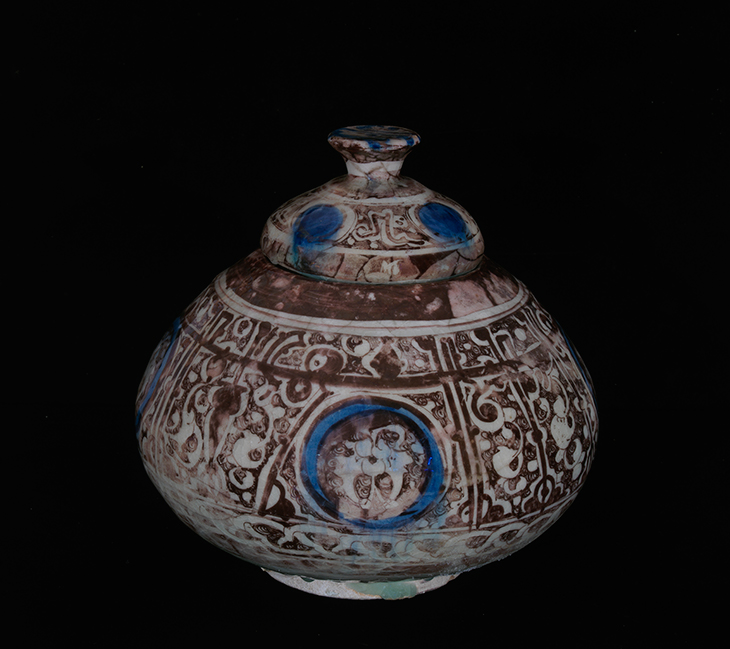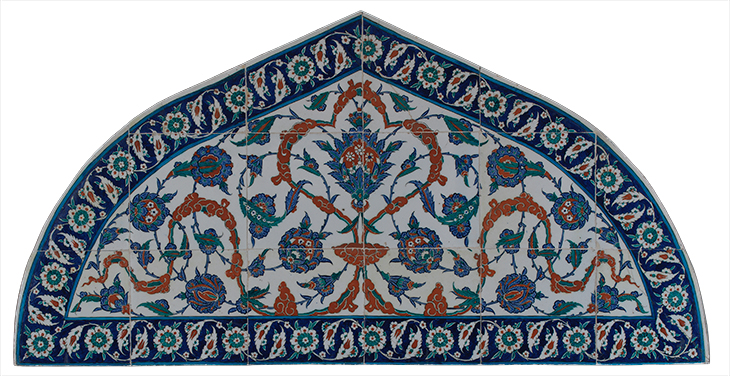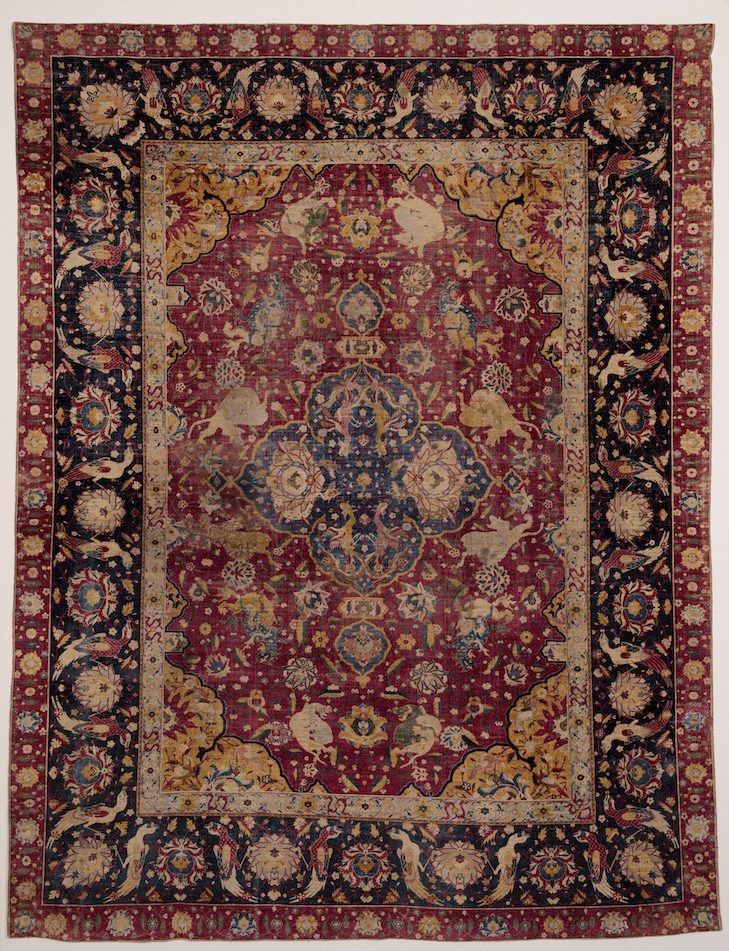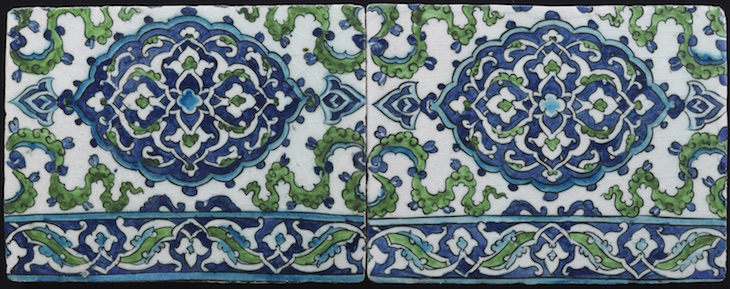From the End of the Ottoman Empire to the Age of Oil
This show explores the vast collection of pottery, painted manuscripts and textiles from the Middle East amassed by the oil tycoon Calouste Gulbenkian during the early years of the 20th century – a period that coincided both with the decline of the Ottoman Empire and the rapid growth in the West of interest in Islamic art. Find out more from the Gulbenkian Museum’s website.
Preview the exhibition below | View Apollo’s Art Diary here

Vase with cover (late 12th century), Raqqa, Syria. Photo: Catarina Gomes Ferreira; Calouste Gulbenkian Museum
Calouste Gulbenkian was born to an Armenian family in the Ottoman Empire in 1865, but spent much of his life in Paris, Lisbon, and especially in London. His interest in the art of Syria, Turkey and Iran coincided with the growth of Orientalism in Western Europe that led to a boom in the Islamic art market. Raqqa ware (lustreware ceramics from the north-eastern Syrian city), such as this rare 12th-century vase decorated with inscriptions in Kufic script, was particularly prized given the association of the city with One Hundred and One Nights.

Tile panel in the form of a tympanum (c. 1573), Iznik, Turkey. Photo: Catarina Gomes Ferreira; Calouste Gulbenkian Museum
This Iznik tile tympanum is one of a series of identical panels from the Piyale Pasha mosque in Istanbul, probably designed by workshops of the imperial palace during the early Ottoman period. They arrived on the European market at the end of the 19th century, having been removed from the mosque after an earthquake.

‘Animal fighting’ carpet (mid 16th century), Kashan, Persia. Photo: Carlos Azevedo; Calouste Gulbenkian Museum
In the mid 16th century, when this carpet was made, the Persian city of Kashan was – as it still is – an important centre for luxury silks. In the quatrefoil in the middle, a phoenix and a dragon battle, while the field around is populated by lions, tigers, panthers and antelopes, and decorated with floral motifs. The carpet was once owned by the influential German art historian and collector Wilhelm von Bode, and later the Kuntsgewerbemuseum in Berlin, from whom Gulbenkian acquired it in 1936.

Two border tiles with medallions (late 17th century), Damscus, Syria. Photo: Catarina Gomes Ferreira; Calouste Gulbenkian Museum
Stone-paste pottery – also known as fritware, since the process requires ground glass (‘frit’) to be combined with clay, reducing the necessary firing temperature – was invented in Iraq at the beginning of the 9th century. The wares produced have a clear white colour; on these two tiles from Damascus, floral geometric designs are painted in varying shades of turquoise, beneath the glaze.











![Masterpiece [Re]discovery 2022. Photo: Ben Fisher Photography, courtesy of Masterpiece London](http://www.apollo-magazine.com/wp-content/uploads/2022/07/MPL2022_4263.jpg)
Why are fathers so absent from art history?